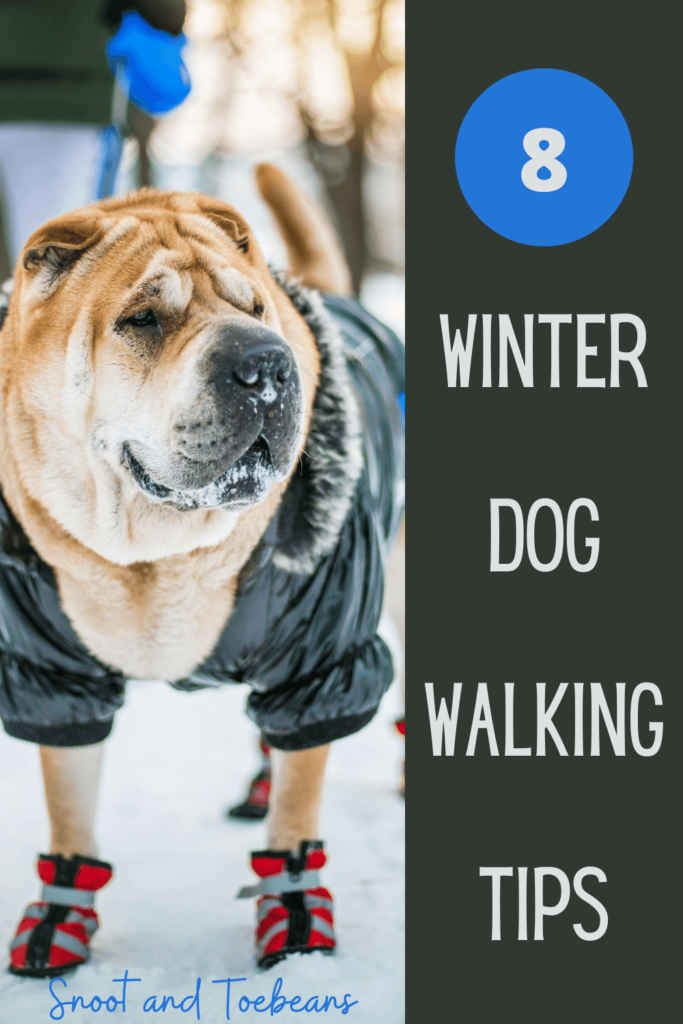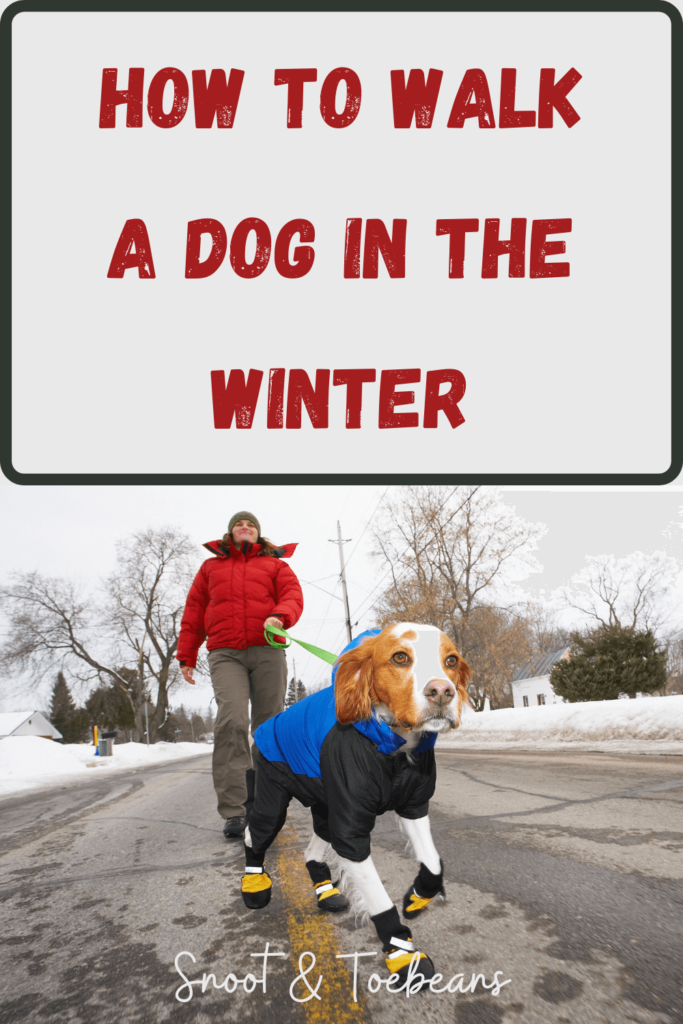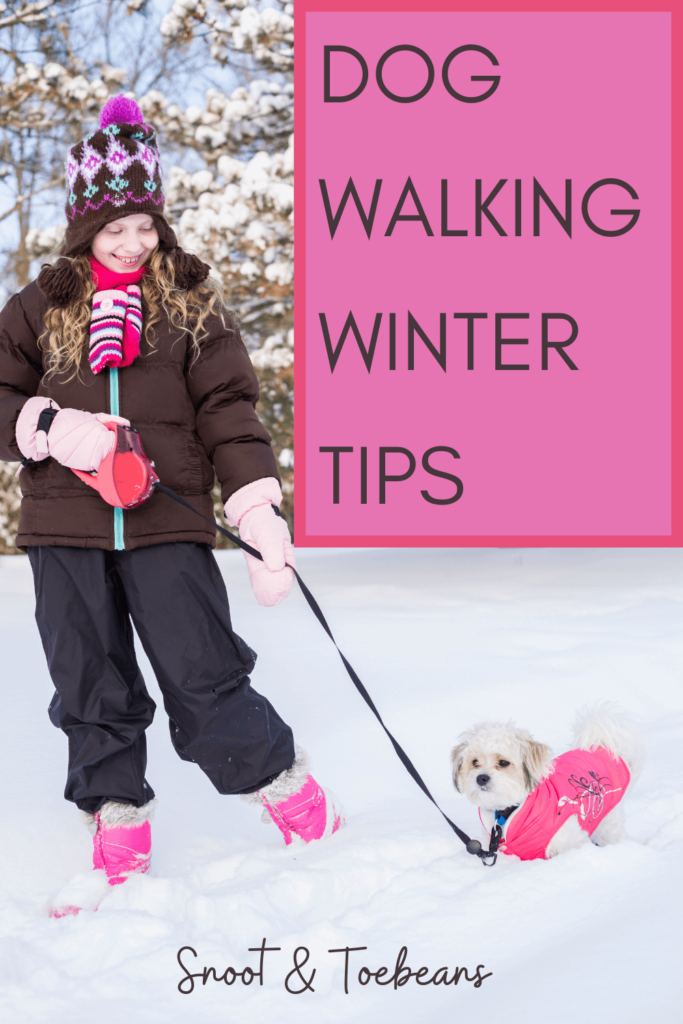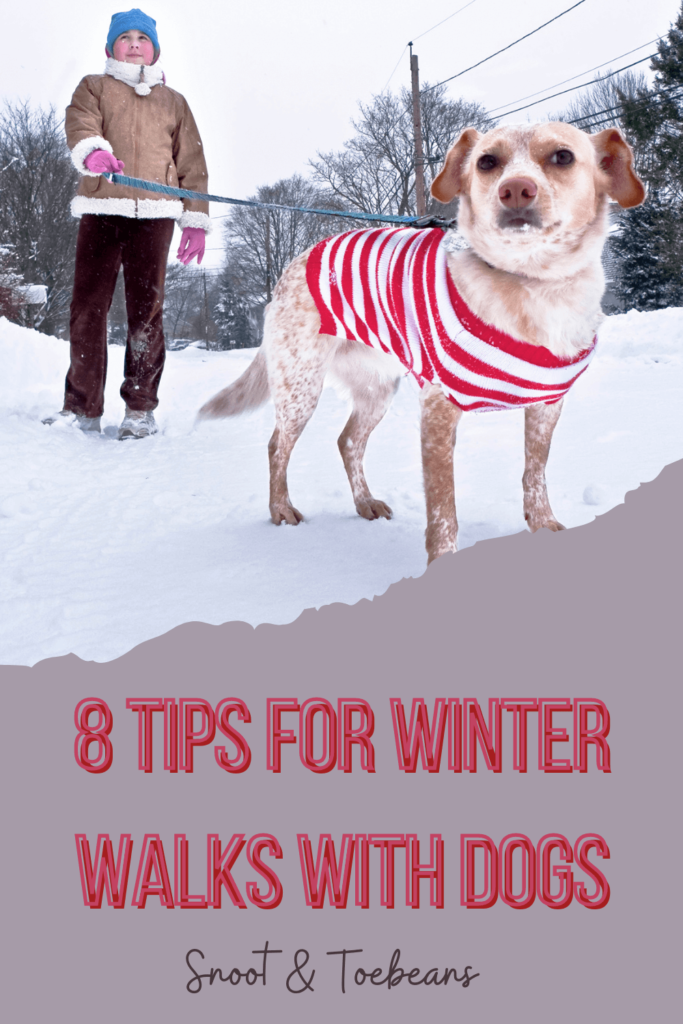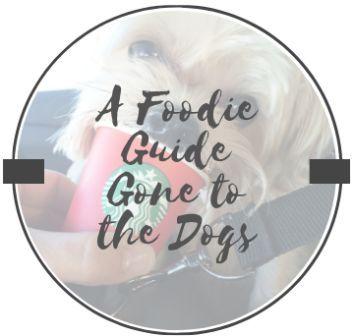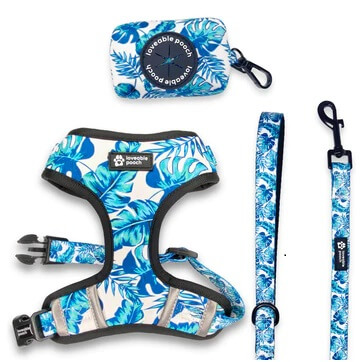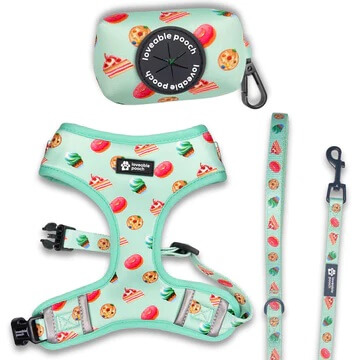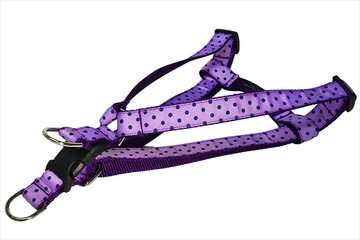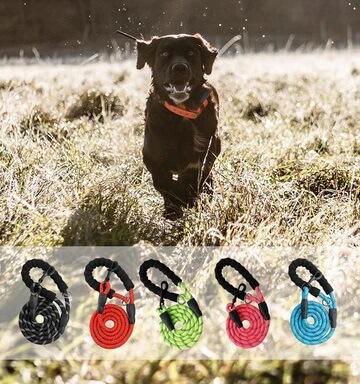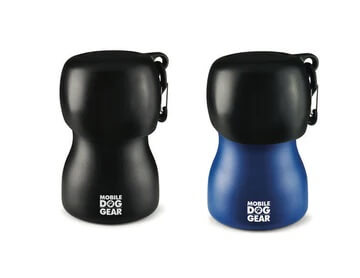Disclosure: My dog blog is supported by dog parents just like you. I only recommend products that I would use on my dogs. All opinions expressed here are my own. I sometimes earn a small affiliate commission, at no extra cost to you, when you click through the affiliate link and purchase something. You can read more about my affiliate policy here.
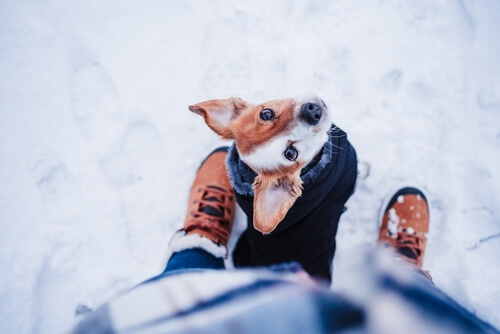
There’s a reason January is Walk Your Dog Month and February 22nd is National Walking the Dog Day! In fact, they’re deliberately set these months although the weather is frigid in most places. Winter walks with dogs are just as important as walking with them the rest of the year.
Most dogs in the U.S. don’t get anywhere near the amount of winter exercise they need. For instance, the canine obesity rate of over 50% is evidence of this.
Therefore, it’s not enough to only walk a dog in nice weather! Dogs need walks to relieve themselves, to exercise, and for mental stimulation year round. So, as dog parents we have to make a commitment to keep our babies moving, snow or shine!
However, keeping up an exercise routine in the winter can be hard for us and our dogs. For example, cold temperatures, snow, and shorter days makes winter walks with dogs difficult.
Plus, these conditions along with other challenges can be potentially dangerous for winter walks with dogs. However, following some winter safety tips can help reduce some of the dangers.

Now This Is Something To Bark About!!
8 Tips for Winter Walks with Dogs
Winter walks with dogs have their challenges, but can be done in a fun and safe way. For instance, paying attention to surroundings and using common sense can ensure a safe and active winter walk.
Plus, dog parents should take precautions before heading out on frigid days. For example, bundle up to avoid getting sick and wear proper footwear to avoid injury.
Winter walks with dogs can be enjoyable, or at least bearable, and safe when following these eight tips.
1- Walk During the Warmest Part of the Day
Check the weather before heading outside, and plan your walk around the warmest time of day. For instance, the warmest time of the day is usually mid-afternoon, 3 p.m. more specifically.
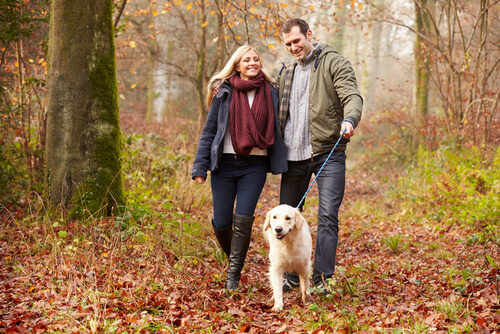
Therefore, limit the time on outdoor potty breaks and save the exercise walk for the mid-afternoon. Furthermore, it’s important to follow a few cold temperature guidelines for dogs.
According to PetMD, temperatures shouldn’t become a problem for most dogs until they fall below 45 degrees Fahrenheit. For instance, at this point some cold-averse dogs might begin to feel uncomfortable.
Furthermore, PetMD suggests these cold temperature guidelines for dogs:
- When temperatures drop below 32 degrees Fahrenheit – pay attention to the well-being of small breed dogs, dogs with thin coats, and/or very young, old or sick dogs.
- Once temperatures drop under 20 degrees Fahrenheit – be aware that any dog could potentially develop cold-associated health problems such as hypothermia and frostbite.
In addition, if the temperature is above freezing, you still have to take other weather factors into account. For instance, wind chill, precipitation, how sunny it is, snow or ice are important to consider.
So, bottom line, figure out the warmest time of the day to take your dog for a winter walk.
2- Shorten the Walk
Even the warmest time of the day could still be extremely cold, so consider a shorter walk. Plus, a shorter walk is better than no walk at all. For instance, take your dog out more frequently, but limit the time outside to just a few minutes.
Therefore, limiting the amount of time your dog spends outdoors will help prevent hypothermia or frostbite. Furthermore, keep an eye on your dog’s behavior for signs of being too cold.
For instance, watch for these signs:
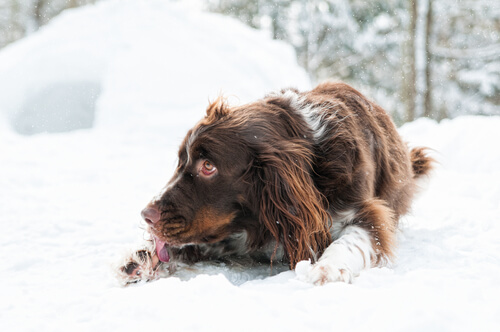
- whining
- picking up paws
- shivering
- licking paws
- slowing down
- stopping
- looking for somewhere to burrow
- anxious behaviors
So, if you see any of these signs, head indoors with your dog!
3- Bundle Up!
Seriously, it is very important for YOU to be properly bundled up for your comfort and for safety. For instance, wear comfortable shoes that won’t slip and slide on ice and snow. If your dog tends to pull, you’ll be glad to have on the proper footwear.
Furthermore, keep hands warm with mittens or gloves so that you don’t lose your grip on the leash. So, whether it’s 50 or 5 degrees, make sure you’re appropriately dressed for you and your dog’s safety.
Remember, the best way you can protect your dog during winter weather is to keep yourself protected first.
4- Bundle Up Your Dog, Too!
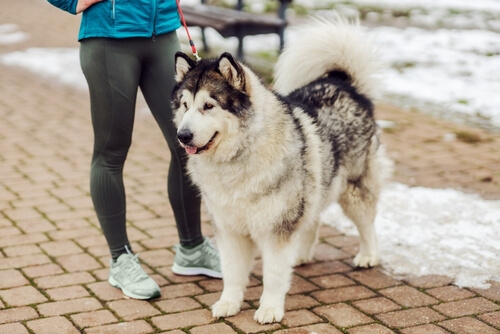
Speaking of bundling up, this goes for your dog, too! Of course, several breeds, such as Malamutes and Huskies can venture out in just their fur.
However, many dogs will be more comfortable and even safer with a sweater or coat to protect them. For instance, small dogs and dogs with short hair should bundle up. But, they aren’t the only ones! Dogs that are very young or old and dogs with any illness or physical disability should, too.
Furthermore, have extra sweaters or coats on hand in case the one your dog has on gets wet. For instance, a wet dog coat or sweater can actually make your dog colder outside than his fur.
5- Tend to Your Dog’s Paws
In addition to protecting your dog’s body with clothing, you should protect their paw pads. Winter can be harsh on their paw pads, and sidewalk salt can be very irritating.
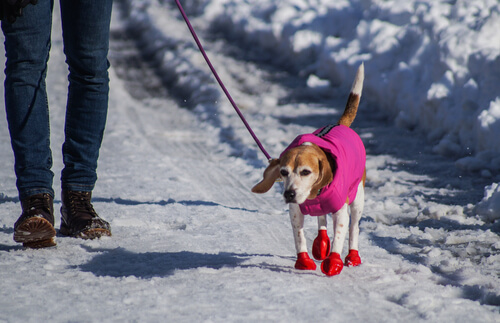
Therefore, consider using a paw balm or wax to insulate and protect your dog’s paws from the elements. There are numerous topical salves or balms to choose from online. However, you can also learn how to make your own paw balm here.
Another barrier to consider using between your dog and the wet, icy cold are booties for their paws. However, not all dogs are fans of wearing booties, but for those that are, they can be beneficial.
For instance, booties trap heat from your dog’s paws and help keep a higher overall body temperature. Therefore, with temperature regulation, your dog’s safety is in check when walking on concrete and through snow.
Thinking about your dog’s paws, keep the hair between their toes clipped short. For instance, ice can accumulate here, causing temporary lameness or making it difficult and painful to walk.
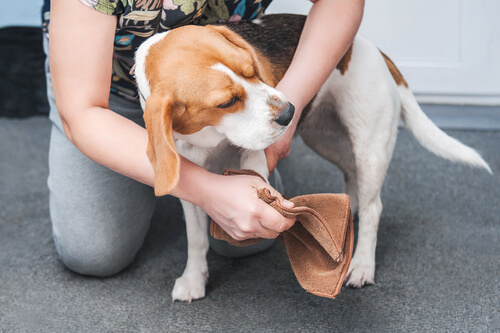
Plus, always wipe your dog’s paws after a winter walk. For instance, use a warm, wet washcloth and a towel to dry, or use pre-moistened pet wipes.
Most importantly, washing removes salt or ice melt chemicals from your dog’s paws. For example, antifreeze has a sweet taste that attracts dogs and could be fatal if ingested. Thus, the importance of washing your dog’s paws, in case they happen to chew or lick them.
6- Stay on the Sidewalk
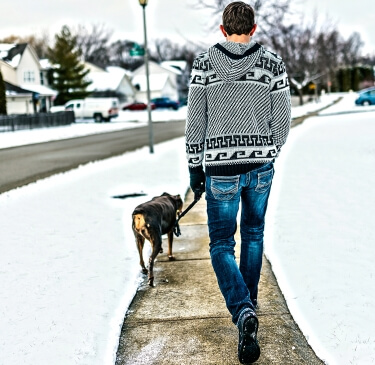
If there’s snow, stay on cleared sidewalks and trails while on extended winter walks with dogs. For instance, walking through snow is going to make your dog colder much faster.
To clarify, many dogs don’t have fur on their bellies. Therefore, snow touching this soft, unprotected area will chill them faster. Although many dogs love playing in the snow, save snow jumping for shorter time periods in the backyard.
7- Don’t Let Your Dog Eat Snow While on a Walk
Speaking of snow, it isn’t good for your dog to consume it! You can deter your dog from eating snow by hydrating with water before and during the walk.
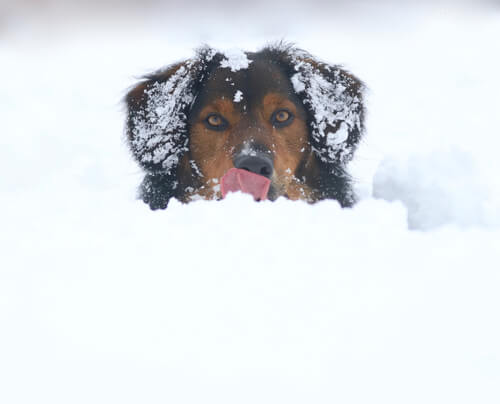
Have you ever heard of Winter Blap Disease? It’s what happens after your dog eats a large amount of snow after being thirsty. For instance, your dog will throw it up after going back inside.
Furthermore, the snow could contain traces of antifreeze, chemicals, or some other contaminant causing harm to your dog. So help prevent your dog from eating snow to alleviate thirst by providing plenty of water.
8- Keep a Tight Leash
When walking anytime of year, it is important to keep your dog on a tight leash. For instance, you don’t want your dog to get away from you on a walk. He or she could get into a dog fight, ran over by a vehicle, or even lost.
However, winter walks with dogs pose a different danger if your dog gets away from you. This is especially so when walking around ice-covered areas, such as frozen lakes or ponds. For instance, there’s no way to know how solid the ice is. Therefore, your dog could fall in.
In Conclusion
The bottom line for winter walks with dogs is to not let cold weather keep your dog from getting exercise. So, when the weather is appropriate, get outside for even 5 to 10 minutes.
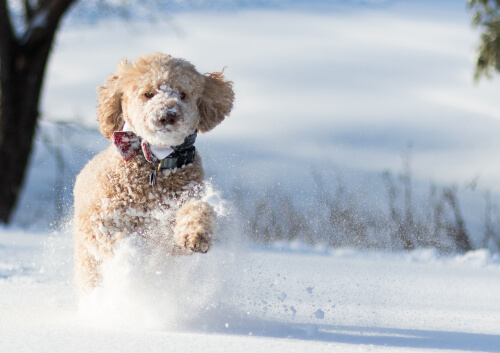
However, if the weather isn’t cooperative, make sure your dog gets sufficient potty breaks. In addition, find indoor activities to keep their minds and bodies active.
Nevertheless, with our helpful tips, you and your dog might just end up loving winter walks! Plus, remember your dog craves your undivided attention, even on walks. So, leave your phone in your pocket and focus on your dog when walking.
Do you have any tips for winter walks with dogs? Share them with us in the comments below.
You might like to read these posts from our Dog Health and Wellness section:
Dog Care During Winter – 10 Tips for Protection
Dog Paw Balm – Great for Dry, Cracked Paws
The Essentials to Know in Dog First Aid
You can use the following images to pin this information to your Pinterest account.
